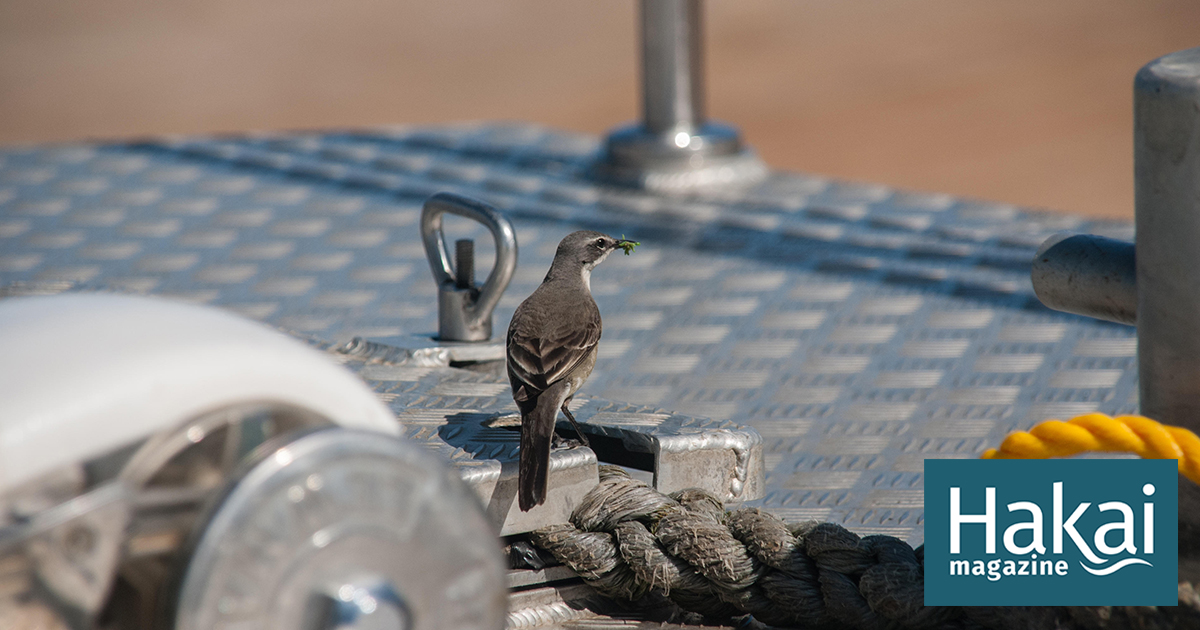Основні поняття
Birds utilize ships for migration, offering a new strategy for long-distance travel.
Анотація
Birds worldwide hitchhike on ships during migrations, with millions estimated to rest on boats. Ship-assisted migration provides crucial stopovers and food sources for birds crossing oceans, potentially aiding in colonization of new regions.
Налаштувати зведення
Переписати за допомогою ШІ
Згенерувати цитати
Перекласти джерело
Іншою мовою
Згенерувати інтелект-карту
із вихідного контенту
Перейти до джерела
hakaimagazine.com
With Ships, Birds Find an Easier Way to Travel | Hakai Magazine
Статистика
"On average, he saw three birds arrive on the boat every day."
"Extrapolating from his observations to the thousands of ships that travel the Mediterranean every day and the billions of birds that cross the sea during their migrations, Sarà estimates that as many as four million birds may be taking rest stops on boats during their spring migrations across the Mediterranean."
"Even counting only the commercial shipping fleet, around 90,000 ships are regularly crisscrossing the world’s waters."
"In about half of these cases, Lees says, the committee suspects the bird has arrived with the help of a boat."
"The best evidence of ship-assisted colonization comes from a bird that doesn’t usually migrate at all: the Indian house crow."
Цитати
"Grain eaters tend to get handouts from people, such as crisps. And insectivores may find windblown insects. Raptors use the boat as a perch to hunt seabirds." - Alexander Lees
Ключові висновки, отримані з
by Hakai Magazi... о hakaimagazine.com 02-21-2024
https://hakaimagazine.com/news/with-ships-birds-find-an-easier-way-to-travel/
Глибші Запити
How does ship-assisted migration impact bird populations globally?
Ship-assisted migration can have both positive and negative impacts on bird populations globally. On the positive side, it provides birds with an alternative way to travel long distances, especially across oceans where islands for resting are scarce. This strategy allows birds to conserve energy, avoid dangerous weather conditions, and find food sources while onboard ships. It may also facilitate colonization of new regions by certain species that stow away on boats unintentionally.
However, there are potential risks associated with ship-assisted migration as well. Birds hitchhiking on ships could inadvertently introduce invasive species to new areas or disrupt local ecosystems by competing with native species for resources. Additionally, birds might be exposed to pollutants or other hazards present on ships which could negatively impact their health and survival.
Is there any potential downside or risk associated with birds using ships for migration?
While ship-assisted migration offers benefits such as providing rest stops and food sources during long journeys, there are indeed potential downsides and risks involved in this phenomenon. One major concern is the possibility of introducing invasive species to new regions when birds hitch a ride on ships. These introduced species could outcompete native wildlife for resources, disrupt local ecosystems, and potentially cause harm to biodiversity.
Furthermore, birds traveling on ships may encounter various hazards like pollution from fuel emissions or chemicals used onboard vessels. Exposure to these pollutants can have detrimental effects on bird health and reproductive success. There is also a risk of collisions with structures or machinery on the ship which could result in injury or death for the avian passengers.
How can studying ship-assisted migration contribute to conservation efforts beyond ornithology?
Studying ship-assisted migration not only enhances our understanding of avian behavior but also has broader implications for conservation efforts beyond ornithology. By investigating how birds utilize ships as stepping stones during their migrations, researchers can identify key stopover locations along shipping routes that are crucial for migratory bird populations.
This information can inform conservation strategies aimed at protecting these stopover sites and minimizing potential threats posed by human activities such as shipping traffic. Understanding the patterns of ship-assisted migration can also help policymakers develop guidelines or regulations to mitigate risks associated with accidental introductions of invasive species through this pathway.
Moreover, insights gained from studying this phenomenon may lead to collaborative efforts between ornithologists, marine biologists, environmentalists, and policymakers towards promoting sustainable practices in maritime industries that prioritize wildlife conservation while ensuring efficient transportation networks worldwide.
0
